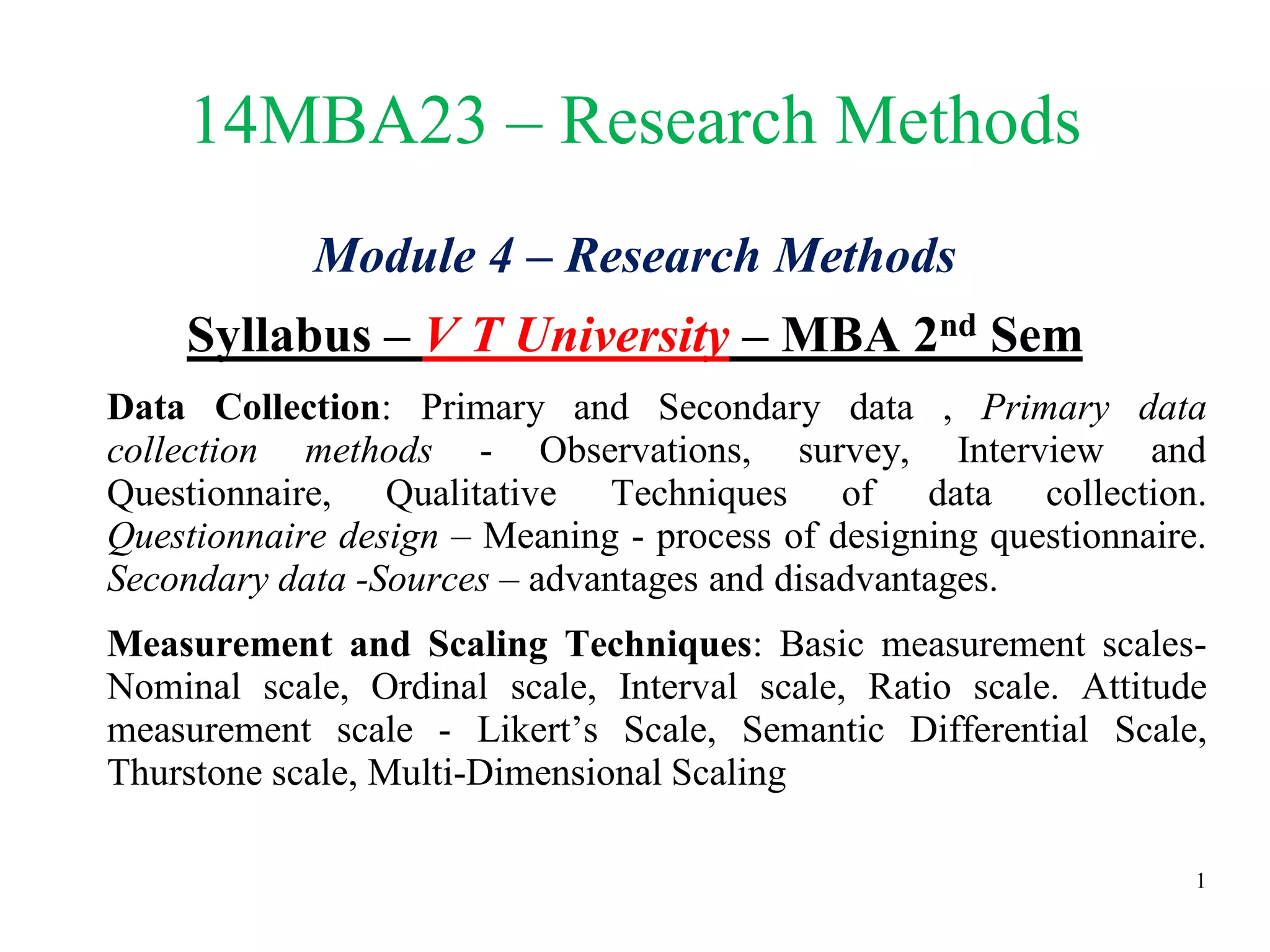The document discusses various methods of primary data collection including observation, surveys, interviews and questionnaires. It provides details on each method, such as observational methods involving non-verbal analysis and linguistic analysis. Questionnaire design is also covered, noting the different types of closed-ended, open-ended and mixed questionnaires. Key steps in designing a questionnaire include deciding what information is needed, formulating question types, wording, and pre-testing the questionnaire. Secondary data sources and their characteristics are also briefly mentioned.














































